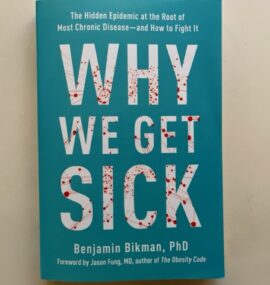Insulin resistance predicts greater risk of chronic diseases
But you can take steps to avoid insulin resistance
Cardiometabolic health refers to the degree to which your heart functions properly, your circulatory system transports blood efficiently to all parts of your body (especially your heart and brain), and your blood sugar (glucose) stays in a desirable range. Embracing the healthy lifestyle choices, Keep Moving and Eat Better, can improve your cardiometabolic health. Oddly, medical research on cardiometabolic health typically focuses on negatives, that is, cardiometabolic health risk factors. They include high blood pressure, high blood sugar, high LDL-cholesterol, low HDL-cholesterol, high blood triglycerides, and high central obesity (belly fat, often measured as waist circumference).
Cardiometabolic health sounds like a good thing to have. Do Americans generally have optimal cardiometabolic health? Researchers addressed this question with data from 8,721 participants in the National Health and Nutrition Examination Survey 2009–2016. Researchers defined optimal metabolic health the following: waist circumference (WC <102/88 cm for men/women), blood glucose (fasting glucose <100 mg/dL and HbA1c <5.7%), blood pressure (systolic <120 and diastolic <80 mm Hg), triglycerides (<150 mg/dL), and high HDL-cholesterol (≥40/50 mg/dL for men/women), and not taking any related medication. According to this definition, only 20 percent of Americans had optimal cardiometabolic health. Plus, using more recently recommended cut-points for the above factors reduced the proportion to 12 percent. Yikes! Participants with optimal cardiometabolic health tended to exhibit the following: female gender, younger age, more education, never smoking, practicing vigorous physical activity, and low body mass index.
Insulin resistance is a relatively unappreciated but key physiological measure that underlies these cardiometabolic health risk factors. The pancreas produces insulin, which is a hormone that’s involved in numerous physiological processes including metabolism. Among its many roles, insulin escorts blood glucose molecules into muscle and other cells as a source of energy. For example, when you go for a brisk walk, your leg and other muscles require an infusion of glucose as a source of energy. Insulin resistance arises from long-term, high blood insulin levels that cause muscle and other cells to “resist” insulin escorting glucose molecules into cells. This resistance leads to high levels of blood glucose. Researcher Benjamin Bickman, in his recent book, Why We Get Sick, attributes most chronic diseases, directly or indirectly, to insulin resistance. Studies show that insulin resistance increases your risk of type 2 diabetes, cardiovascular disease, hypertension, and central obesity, among other ills.
More specifically, insulin resistance causes endothelial cells that line blood vessels to become less sensitive to insulin’s ability to increase nitrous oxide (NO) production that dilates blood vessels. Stiffer blood vessels lead to high blood pressure and cardiovascular disease. Insulin resistance predicts lower glucose uptake in the brain, which leads to less brain energy and compromised brain function. Insulin resistance promotes inflammation. Finally, insulin resistance shifts production of LDL-cholesterol from pattern A (larger, more buoyant, less atherosclerotic) to pattern B (smaller, denser, more atherosclerotic).
Accumulating evidence points towards insulin resistance as a cause of obesity rather than over-eating. For decades, researchers and health organizations have promoted the energy-balance model of obesity. Briefly, this model assumes that “a calorie is a calorie” in terms of weight gain and loss. According to this model, differing levels of carbohydrates, protein, and fats in foods don’t matter much, except insofar as the number of calories or the palatability of foods are concerned. Weight gain is explained as excess caloric intake relative to energy expended often coupled with a sedentary lifestyle. In other words, people who gain weight and get fat eat too many calories and don’t get enough exercise.
This sensible-sounding model has two major limitations. First, exhortations from medical authorities to eat fewer calories and exercise more have not prevented the large rise in obesity in the US and elsewhere over the last five decades. Second, persons with obesity are often stigmatized for their “failure” to exert sufficient will power over their eating or for some other assumed psychological defect.
David Ludwig, a nutrition researcher at Harvard, and colleagues argue for the carbohydrate-insulin model of obesity as alternative to the energy-balance model. The carbohydrate-insulin model reverses the direction of causality, namely that excessive deposition of dietary energy as fat leads to reduced satiety, increased hunger, and more eating. As the name “carbohydrate-insulin” model suggests, the key actors are carbs and insulin. Eating lots of carbs with high glycemic load (in other words, readily digestible and absorbable carbs, such as refined grains, potatoes, foods with lots of added sugar), leads to sharp rises in blood insulin.
In response, muscles rapidly take up blood glucose as food energy. Several hours after a high-glycemic load meal, blood glucose drops to low levels, which stimulate hunger and eating. Ironically, the demonization of fat over the past 50 years (as a primary cause of obesity) has led food manufacturers to increase the proportion of processed foods with high-glycemic load carbs. Plus, processed foods comprise more than half of the average American’s food intake. According to the carbohydrate-insulin model, losing weight or maintaining weight loss is more a matter of what kinds of carbs you eat rather than how many calories you eat.
What can you do to avoid or reverse insulin resistance? Get plenty of physical activity and emphasize low-glycemic load foods. In practice, this means eating lots of green leafy veggies, other non-starchy vegetables, legumes (beans, lentils), unsweetened yogurt, and fruits, along with healthy fats from avocadoes, nuts, seeds, and olive oil. Minimizing high-glycemic load foods also mean cutting back on white bread, other refined grain products (cookies, muffins, bagels), potatoes, and sugary beverages. Eat better, not necessarily less, to avoid insulin resistance, minimize your risk of chronic diseases, and enjoy better cardiometabolic health.







